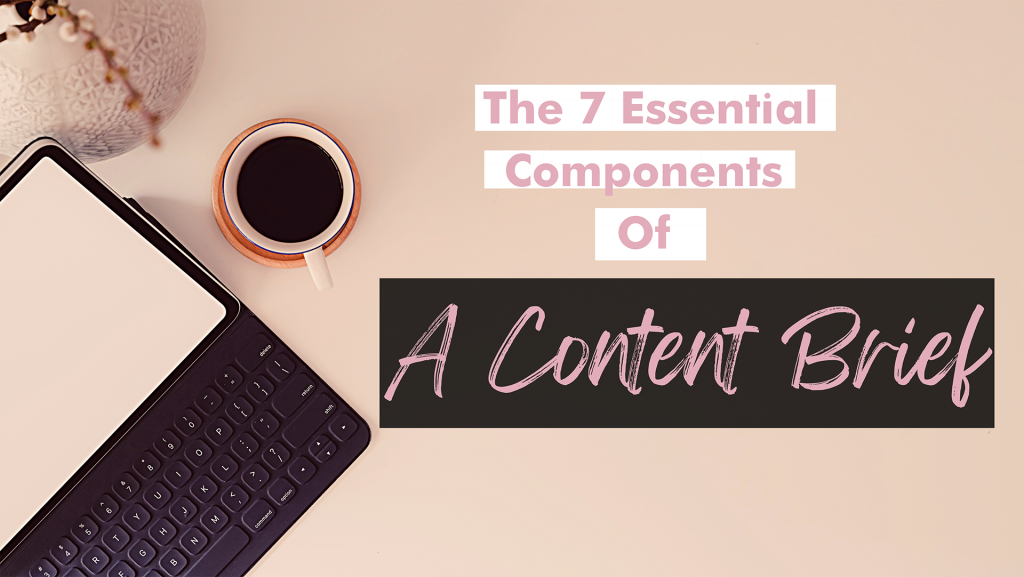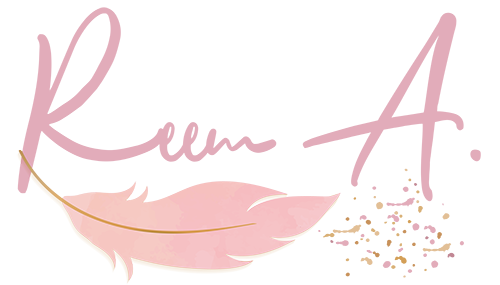I often hear business owners complaining that their content writer doesn’t ‘get’ them.
They had one thing in mind but what they got back was something entirely different. Whether it’s the overall tone, the messaging, or the angle… it all just missed the mark.
If you, too, are finding yourself in this situation time and time again, I have one piece of advice for you: start using briefs.
Or, if you’re already using them, take a step back and analyze whether they’re truly effective.
Having been a content writer myself for years, I can tell you that a great brief makes all the difference. It’s like a map that guides the writer throughout the journey (i.e., the writing process), ensuring that everyone arrives at their destination (i.e., the final product) happy and satisfied.
In this guide, I’ll share with you what the best briefs I’ve ever received have in common. These are the 7 essential components of a content brief.
The Short Answer to the Big Question: What Is a Content Brief?
A content brief is simply a document that outlines everything a writer needs to know to produce the best possible content for you. While many consider a title and word count to be sufficient, a brief should contain much more. Here’s exactly what should be included in yours:
I. Introduction
II. The Benefits of Social Media Marketing
A. Increased visibility for your brand
B. Improved search engine rankings
C. More opportunities for conversions
D. Greater insights into your audience
E. Stronger relationships with customers and prospects
F. Better ROI than other marketing channels
G. Increased brand loyalty
III. FAQs
IV. Conclusion
By sharing this information upfront, you’ll save yourself a lot of time and headaches down the road. The more direction a writer has, the better they’ll be able to produce content that meets (and even exceeds) your expectations.
The 7 Essential Components of a Content Brief: In-Detail
Now that you know the basics, let’s take a closer look at each of the 7 essential components of a content brief.
1. Your Business Goals for the Piece
As the commissioning business owner, you must start by sharing your specific goals for the content piece. Is the goal to drive sign-ups to a particular product demo? To get more shares on social media? To capture a featured spot in a relevant Google search?
Be as clear and concise as possible here. Vague goals like “increasing brand awareness” are too broad and won’t give the writer enough direction. But if you say something like, “I want this article to be one of the top 3 results for the keyword “best treadmills for runners,” the writer will have a much better understanding of what success looks like.
2. The Target Audience
Next up, you need to clearly define who the target audience is for the piece. This includes things like age, gender, location, and even interests. The more specific you can be here, the better. Lifestyle details can also be helpful (e.g., “busy moms looking for quick and healthy dinner recipes”).
The writer must understand who they’re talking to so that they can adjust their tone, style, and even choice of words accordingly. You wouldn’t want to use the same language in an article aimed at teenagers as you would in one targeting CEOs, for instance.
3. A High-Level Overview of What You Want the Article to Cover
After you’ve addressed the who and the why, it’s time to start talking about the what. In other words, what topics or subtopics do you want the article to cover?
This is where a well-crafted outline comes in handy. Not only will it help the writer understand what you’re looking for, but it will also save you time by preventing them from going off on tangents that aren’t relevant to your needs.
Let’s say your blog post is about the benefits of social media marketing. A good outline might look something like this:
I. Introduction
II. The Benefits of Social Media Marketing
A. Increased visibility for your brand
B. Improved search engine rankings
C. More opportunities for conversions
D. Greater insights into your audience
E. Stronger relationships with customers and prospects
F. Better ROI than other marketing channels
G. Increased brand loyalty
III. FAQs
IV. Conclusion
You aren’t being “too” specific with what the article should cover here. Instead, you’re giving the writer a broad overview of the main points that need to be addressed. They can then fill in the details as they see fit.
Without this level of direction, the writer could choose entirely different topics – like the history of social media marketing or a case study on one company’s success. They wouldn’t be wrong per se, but those topics wouldn’t necessarily align with your goals for the piece.
4. Key Points/Takeaways
In addition to the overall structure of the article, it’s also important to specify the key points or takeaways that you want the reader to remember when they’re finished. This guarantees that while the writer will have the freedom to be creative, they’ll also be sure to hit all the marks that are important to you.
For our social media marketing example, key points could include things like:
- It’s important to have a strategy in place before you get started
- There are a number of different social media platforms, each with its own strengths and weaknesses
- You need to be active on social media to see results – simply having a profile isn’t enough
- Posting quality content on a regular basis is essential for success
- It’s also important to interact with other users and build relationships
- You should track your progress and adjust your strategy as needed
The writer will then flesh out each point as they see fit, but they won’t be able to deviate too far from what you’re looking for.
5. Any Specific Requirements
Apart from the title, word count, and due date, are there any other requirements that the article needs to meet? For instance, are there certain key phrases or industry terms that need to be used? Are there links to other articles or websites that must be included?
Requirements could include:
- Keyword density (e.g., the article must include the keyword “social media marketing” at least X number of times)
- Keyword placement (e.g., the keyword must be in the title, H2s, and/or meta descriptions)
- Internal links (e.g., the article must link to at least two other articles on your website)
- External links (e.g., the article must include at least one link to a reputable source outside of your website
But they can also extend to more stylistic choices, such as:
- Capitalization of headings (e.g., should all H2s be in sentence case or title case?)
- Voice (e.g., should the article be written in first person or third person?)
- Tone (e.g., should the article be lighthearted or serious?)
You don’t have to include every single requirement in the brief, but it’s helpful to have at least a general idea of what you’re looking for before you start. This way, there are no surprises later on down the line.
6. CTAs
If you don’t specify what you want the reader to do after they finish the article, the writer might not include a call-to-action (CTA) at all. Or, even worse, they could include one that doesn’t make sense for your business or goals.
Your CTA could be anything from signing up for your email list to downloading a white paper to following you on social media. But whatever it is, it needs to be relevant to both the article and your business as a whole.
For our social media marketing example, a few possible CTAs could be:
- Sign up for our email newsletter for more social media tips
- Download our free white paper on the Top 10 Social Media Marketing Strategies
- Follow us on Twitter for the latest news and updates
7. Examples of Similar Work
Finally, if you have any examples of articles that you like or that are similar to what you’re looking for, it’s helpful to include them in the brief. This gives the writer a better idea of your vision for the piece and helps them understand what specific elements you’re looking for.
Your examples could be from your own website or from other sources entirely. Just make sure that they’re relevant to the topic at hand and that you explain why you’re including them.
Why Use a Brief?
Now that we’ve gone over what should be included in a content brief, it’s time to answer the most important question: why use one at all? Especially that it seems like a lot of work to put one together when you could just tell the writer what you want and let them get to work, right? Not quite.
Here are a few reasons why using a content brief can save you time, money, and headaches down the line:
- It forces you to think about your goals for the article before commissioning it, which can help you avoid scope creep (when the writer goes off on a tangent and creates something you’re not happy with)
- It puts all the important details in one place, so you don’t have to worry about forgetting anything important
- It’s a helpful reference tool for both you and the writer, so everyone is on the same page from start to finish
- It saves you time in the editing and revision process because you can simply point the writer back to the brief if there are any questions about what needs to be changed
- It saves you the money you’ll spend on revisions (because, let’s face it, if the brief wasn’t clear from the start, the writer technically didn’t do anything wrong)
And the best part is: once you have a great brief template that you’re happy with, you can use it over and over again. So really, you’re just investing a little bit of time upfront in putting a system in place that will save you hours (and money) down the road.
From there, watch as your content starts to hit the mark more often than not – and suddenly, you’ll find yourself with a lot less to complain about when it comes to your written materials.
The Bottom Line
Expectations are key in any relationship – and the business relationship between a company and its freelance writers is no different. By taking the time to put together a clear, concise content brief, you can avoid miscommunications, misunderstandings, and wasted time and money down the road.
By integrating a few key elements into your content briefs, you can be sure that your writers are on the same page as you from start to finish. And when everyone is working towards the same goal, great things are bound to happen.
Think of it this way: if you were commissioning a painting, you wouldn’t simply tell the artist the dimensions and then leave them to it. You’d give them an idea of the colors, the overall mood, what sort of objects or scenery you want included, and maybe even some reference images. The same goes for writing.
So next time you need to brief a freelance writer, use this guide as a reference. And before long, you’ll receive content that’s exactly what you had in mind – no revisions necessary.
I help businesses boost their online visibility by creating high-quality, targeted content. Contact me to fill up your content calendar today.



